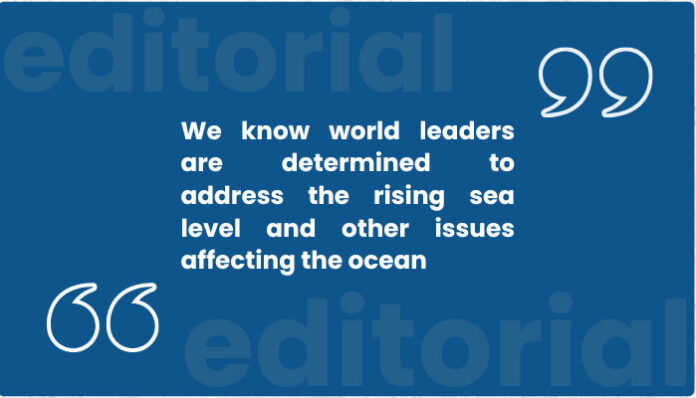THE five-day Ocean Summit in Nice, France ended Friday, with participants going away with echoes of their discussions and proposals on how to address rising sea level and the need for global action.
The Third UN Ocean Conference in the second-largest French city on the Mediterranean coast, co-hosted by France and Costa Rica, had ripples again on the rising sea levels in the Pacific islands which include the Philippines, an archipelagic nation of 7,641 islands, which has disconcerting coastal vulnerability.
This boundless coastline length of 36,289 kilometers, due to the country’s archipelagic nature, is the fifth-longest in the world, with about 60 percent of the Philippine population residing along the coast, where most of the larger cities and population centers are.
Results from the global leaders’ discussions in Nice may not be immediately translucent in the next couple of years, but at least they have focused on accelerating action and mobilizing actions to conserve and sustainably use the ocean, which covers about 71 percent of the Earth’s surface.
This area includes the vast majority of the Earth’s water, with about 96.5 percent of all water contained within the oceans, according to NASA Earth Observatory.
We are particularly interested in the issue of rising sea level in the Philippines, which is wrestling with the impact of rolling up sea levels, with recent studies showing some coastal areas have experienced sea level rise rates faster than the global average.
The Quezon City-based Climate Tracker Asia has said jumping up sea levels in the Philippines has been increasing 5-7 mm per year, outpacing the global average rate from 3.6 mm per year in the 2006-2015 period to 4.5 mm per year in 2023.
Coastal areas in the east of Samar and Leyte, southwestern Central and Western Visayas, eastern Mindanao, and southern Zamboanga have experienced sea level rise at a rate of 4.5 to 5 mm per year.
Natural ocean patterns, like El Niño Southern Oscillation and Pacific Decadal Oscillation, as well as human activities have contributed to the significant increase in sea level.
A study in 2016 found that sea levels in Metro Manila, with about 14 million inhabitants or 12 percent of the country’s population of 117 million, have risen rapidly, but noted this could be influenced by land subsidence, or when the ground sinks over time, due to excessive groundwater extraction.
The increase has also been attributed to a combination of natural ocean patterns and human-induced climate change as the seas encroach on the shores and coastal areas, jabbed by increasing threats of flooding, erosion, and saltwater intrusion.
We rest our case in the determined efforts of world leaders to address the rising sea level and other issues affecting the ocean.








